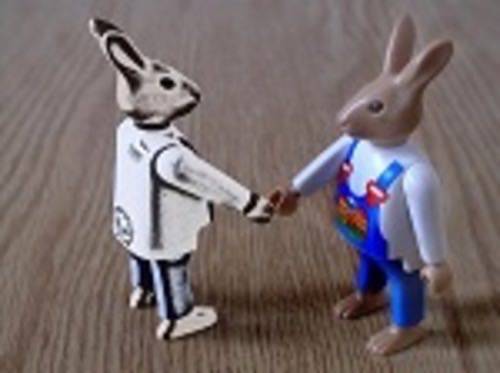Social CRM, as a concept, has been around for five or six years now, according to Paul Greenberg and Estaban Kolsky, two analysts interviewed on the subject by Dennis Howlett. But we’re only just now starting to understand the concept, and it may be several years before we have any real success stories in the area. Never the less, we can already learn a few lessons from the pioneers of social CRM.

Social Channels Aren’t For Everyone
Kolsky says that even though Facebook and Twitter are everywhere, not every company needs to use them. He says he’s seen some companies recently moving away from using Facebook as a service channel.
Greenberg compares social channels to pipes. “What you put in the pipes is what’s important, not the pipe itself.”
Howlett asked about the seeming disconnect between the fact that while SAP has a dedicated social program and Oracle is relatively closed, Wall Street favors Oracle more than SAP. Both men point out that social is not a replacement for the fundamentals of your business. Kolsky says that social is a channel for your business to do what it does best.
Greenberg notes that there hasn’t really been a company that has completely turned itself around with social CRM. Best Buy is the closest example, he says, because they implemented a lot of social software. But ultimately it wasn’t the tools, it was the fact that they were listening to their customers that made the difference.
Social is Really About Data
The real value, Kolsky says, in social media is the data. He says that social media gives business about 100 times as much data as they had before, including a new dimension: intent. It’s now easier for businesses to find out not just what a customer wanted, but why they wanted it.
Kolsky says we started with demographics – who the customer is. Then we added behavioral data – what the customer does. Then we started to learn why. But Kolsky says we’ve still never understood the customer. And social media might be able to help us do that.
Greenberg notes the improvement in sentiment analysis, which has gone from a five point system to an eleven point system. He cautions that it’s no yet truly mature, but we’re seeing more granularity in the analysis. For example, sentiment analysis can now differentiate between someone who is irratible vs. someone who is angry.
Greenberg says you’re not ever going to be able to tailor your product or service to each and every individual’s personal feelings, but you can learn from them. Kolksy says he’s not very interested in real-time data – historical data is where business leaders can learn the most.
This means that skills like applied mathematics and statistics will be necessary for working with social media, he says.
Social CRM is the Starting point for Social Business
Many social CRM systems include internal collaboration tools. They are quickly becoming suites designed to do practically everything in the enterprise. Howlett says that’s not social CRM, that’s social business. Greenbern and Kolsky seem to agree. Both say that social CRM is a good starting point for social business, because it’s the customer-facing part of social business. But they also agree that internal collaboration is a big part of giving customers what they want.
Photo by kioan

















